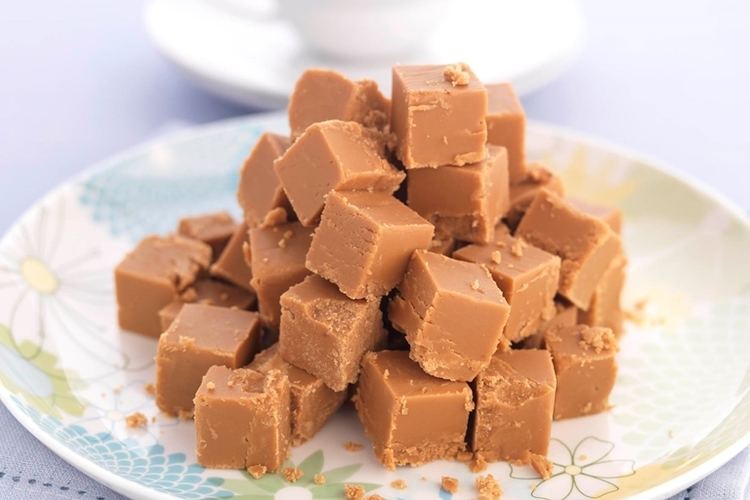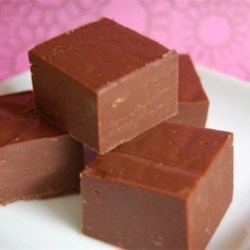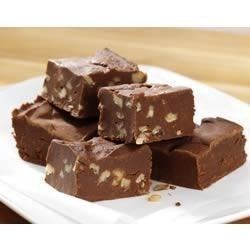Serving temperature Room temperature Variations Multiple | ||
 | ||
Food energy(per serving) a 100 gram serving may have over 450 calories kcal Similar Chocolate, Chocolate brownie, Toffee, Caramel, Fudge cake | ||
Chocolate walnut fudge by tarla dalal
Fudge is a type of confectionery which is made by mixing sugar, butter and milk, heating it to the soft-ball stage at 240 °F (116 °C), and then beating the mixture while it cools so that it acquires a smooth, creamy consistency. Fruits, nuts, caramel, candies, and other flavors are sometimes added either inside or on top. It is often bought as a gift from a gift shop in tourist areas and attractions.
Contents

Easy chocolate fudge recipe
History

An American-style fudge (containing chocolate) was found in a letter written by Emelyn Battersby Hartridge, a student at Vassar College in Poughkeepsie, New York. She wrote that her schoolmate's cousin made fudge in Baltimore, Maryland, in 1889 and sold it for 40 cents a pound. Hartridge obtained the fudge recipe and, in 1890, made 30 lb (14 kg) of fudge for the Vassar College Senior Auction. This Vassar fudge recipe became quite popular at the school for years to come.

Word of this popular confectionery spread to other women's colleges. For example, Wellesley College and Smith College have their own versions of a fudge recipe dating from the late 19th or early 20th century.
Fudge-making evolved a variety of flavors and additives as it grew beyond its popularity at colleges.
Chemistry

In forming a fondant, it is not easy to keep all vibrations and seed crystals from causing rapid crystallization into large crystals. Consequently, milkfat and corn syrup are often added. Corn syrup contains glucose, fructose (monosaccharides), and maltose (disaccharide). These sugars interact with sucrose molecules. They help prevent premature crystallization by inhibiting sucrose crystal contact. The fat also helps inhibit rapid crystallization. Controlling the crystallization of the supersaturated sugar solution is the key to making smooth fudge. Initiation of crystals before the desired time will result in fudge with fewer, larger sugar grains. The final texture would then have a grainy mouthfeel rather than the smooth texture of high quality fudge.
One of the most important attributes of fudge is its texture. The end-point temperature separates hard caramel from fudge. The higher the peak temperature, the more sugar is dissolved and the more water is evaporated, resulting in a higher sugar-to-water ratio. Before the availability of cheap and accurate thermometers, cooks would use the ice water test, also known as the cold water test, to determine the saturation of the confection. Fudge is made at the "soft ball" stage, which varies by altitude and ambient humidity from 235 °F (113 °C) to 240 °F (116 °C). The heated fudge is sometimes poured onto a marble slab to be cooled and shaped.
Some recipes call for making fudge with prepared marshmallows as the sweetener. This allows the finished confection to use the structure of the marshmallow for support instead of relying on the crystallization of the sucrose.
Hot fudge
Hot fudge in the United States and Canada is usually considered to be a chocolate product often used as a topping for ice cream in a heated form, particularly sundaes and parfaits. It may also occasionally be used as a topping for s'mores. It is a thick, chocolate-flavored syrup (flavored with natural or artificial flavorings) similar in flavor and texture to chocolate fudge, except less viscous.
